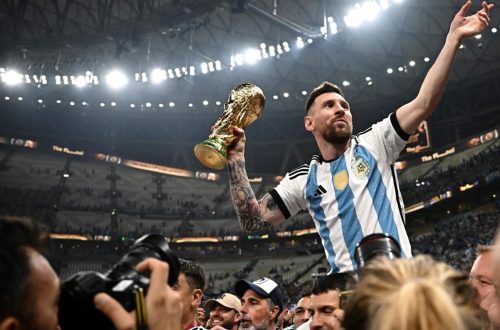By Matthew J. Razzano
Created as part of the House v. NCAA settlement, Deloitte’s new clearinghouse for name, image, and likeness (“NIL”) deals began operating in partnership with the College Sports Commission (“CSC”).[1] Its aim is to approve third-party NIL deals worth more than $600 to ensure that they meet fair-market-value (“FMV”) standards.[2] Or rather, to ensure that schools are not “paying for play” or putting undue influence on sponsors to circumvent the settlement’s cap on revenue-sharing income. But how will NIL Go assess these deals, given the historical legal meaning of FMV?
NIL Go in Practice and FMV
Although the clearinghouse is still new, the CSC has offered some insight into the process by which it will evaluate NIL deals. First, it will run a check on the payor to make sure the payment is not sourced from a booster or affiliated entity. Next, Deloitte will verify that there are legitimate deliverables attached to the contracts (e.g., social media posts, public appearances, autographs, etc.). And lastly, NIL Go will use a proprietary algorithm to measure FMV based on an athlete’s profile.[3] This will include factors such as athletic performance, personal branding, and market elements, among others. If the deal has reasonable comparison contracts it will be cleared.[4] Outside of this range, the athlete may need to respond with additional information. Otherwise, the deal will not be cleared—at which point, the athlete can renegotiate, arbitrate, or still accept the deal but potentially face down-the-road eligibility consequences.[5]
NIL Go has faced an onslaught of initial questions from athletes and schools trying to understand the new compliance regime. What will arbitration look like? Which specific deals require reporting? Are there biases built into the process? But one of the most fundamental issues facing NIL Go is how to define what FMV means in the NIL era. To start, NIL Go has abandoned the more traditional legal language on FMV, shifting instead to the phrase “range of compensation” (“RoC”). Specifically, the CSC states that, “RoC is anchored in valuation principles to determine if a student-athlete’s third-party NIL compensation is commensurate with compensation paid to similarly situated individuals with comparable NIL value.”[6] However, it is still heavily rooted in FMV ideas despite this amorphous language.
NIL FMV and Cues from Contract Law
Regardless of what term NIL Go employs, the idea behind valuing player NIL contracts necessarily borrows from traditional FMV concepts in contract law. To begin, and in the absence of any clear standards, contract law historically looks at reasonability to judge the lawfulness of a contract.[7] Judge Richard Posner for example believed that a close analysis of market forces would determine what was meant by “reasonable.”[8] Even the Uniform Commercial Code contemplates a similar idea, using the term “reasonable” to fill gaps in contracts when no price is stated.[9]
More specifically, a contract is made at FMV when “a willing buyer and a willing seller” who, “neither under compulsion and both with reasonable knowledge of the relevant facts,” agree to exchange a good or service in an open market.[10] Courts are historically leery to intervene if parties negotiate at arm’s length and agree on the terms of a contract.[11] That is, courts rarely void contracts unless aspects of basic formation have not been fulfilled (i.e., no genuine offer or acceptance) or if the terms of the contract are unconscionable.[12] Still, unconscionability is difficult to prove, requiring both a show of procedural (one-sided negotiations) and substantive (one-sided effects) unconscionability.[13] Accordingly, courts have rarely ruled that contracts are unconscionable—i.e., there must usually be some sort of clear undue influence evidence presented.
NIL and Basic Contract Principles
This brings us back to the thousands of NIL deals that will now pass under NIL Go scrutiny. The underlying goal of the clearinghouse is to ensure that athletes are not receiving pay-for-play contracts via backchannels and that the deals reflect the value of the athletes being endorsed. However, the clearinghouse’s multi-step valuation assessment relies on an overly technical economic framework—not a legal one. As a result, NIL Go’s approach to valuing player contracts could trigger unneeded rejections that discard contract principles, and worse, it could hurt the overall market for athlete compensation.
Instead, NIL deals should be evaluated against a common law backdrop that has developed standards over hundreds of years. Under this approach, only the most unconscionable contracts could be voided if fairly negotiated at the outset. A contract would be deemed procedurally unconscionable if the negotiated terms were one-sided. This might historically be shown when a sophisticated party (e.g., a business) contracts with an individual who may not know whether the terms are reasonable.[14] But here, the athlete would in almost every circumstance be deemed “less sophisticated” than the brand endorsing him or her. And yet, the athlete is the party receiving the benefit under scrutiny. So there cannot really be procedural unconscionability in its historical judicial sense since the less sophisticated party receives the alleged windfall. That outcome alone ought to prevent a finding of unconscionability.
Still, let’s also look at the substance. Endorsements are often about potential at the college level. Brands pay exorbitant amounts of money because an athlete has the potential to become a household name and drive customers to its products. When a struggling NIKE signed unproven rookie Michael Jordan to a $500,000/year contract with a stake in the sales, this arrangement may not have seemed reasonable to a body like Deloitte or its economic models at the time.[15] Maybe LeBron James’s $87 million deal with NIKE, right out of high school, would have seemed unconscionable to NIL Go’s algorithm.[16] But these deals certainly paid off for both athletes and NIKE. But for every Michael Jordan and LeBron James, there could be busts or injuries that cost brands significant sums of money. It’s a guessing game, and it requires risk. The point being, if athletic NIL deals are negotiated at arms-length, but are primarily based on potential, they should still survive scrutiny.
If NIL deals are viewed in these terms, nearly all would pass muster. But NIL Go’s algorithm and valuation criteria could treat these contracts in a fundamentally different manner than how courts have historically judged them. And by denying contracts that were negotiated between parties at arm’s length (and are not unconscionable), it could ultimately depress the market for athletes. What NIL Go should do is put their efforts into investigating whether a counterparty to a contract is a booster or affiliated entity. Once that hurdle is cleared, almost every deal should receive a stamp of approval if fairly negotiated. Anything else perverts traditional contract principles and burdens the party (i.e., athletes) with less leverage in the process.
DISCLAIMER: The views expressed in this post represent the author’s alone and do not represent those of any current or former employer
[1] In re: College Athlete NIL Litigation, No. 20-cv-03919, Dkt. No. 717 (N.D. Cal. June 6, 2025).
[2] Student-Athlete NIL Deals, College Sports Comm., https://www.collegesportscommission.org/nil.
[3] See id.
[4] Dan Shanoff, The launch of NIL Go signals a high-stakes evolution in college sports: MoneyCall, N.Y. Times (June 11, 2025), https://www.nytimes.com/athletic/6418924/2025/06/11/nil-go-deloitte-bryan-seeley-college-sports-commission-moneycall/.
[5] Student-Athlete NIL Deals, College Sports Comm., https://www.collegesportscommission.org/nil.
[6] See id.
[7] See, e.g., Foraker v. USAA Cas. Ins. Co., 345 F. Supp. 3d 1308, 1310 (D. Or. 2018); Sonoiki v. Harvard Univ., 37 F.4th 691, 703 (1st Cir. 2022).
[8] Colfax Envelope Corp. v. Local No. 458-3M, 20 F.3d 750, 753 (7th Cir. 1994).
[9] See UCC § 2-305.
[10] United States v. Cartwright, 411 U.S. 546 (1973).
[11] The Cantamar, L.L.C. v. Champagne, 2006 UT App 321, ¶ 31, 142 P.3d 140, 151 (“[I]t is still axiomatic in contract law that persons dealing at arm’s length are entitled to contract on their own terms without the intervention of the courts.”).
[12] Eastern Airlines, Inc. v. Gulf Oil Corp., 415 F. Supp. 429 (S.D. Fla. 1975)
[13] Golden Gate Way, LLC v. Enercon Servs., Inc., 572 F. Supp. 3d 797, 815 (N.D. Cal. 2021) (both procedural and substantive unconscionability are needed, but they operate on a sliding scale where more of one can make up for a deficit of evidence in the other).
[14] Nagrampa v. MailCoups, Inc., 469 F.3d 1257, 1283 (9th Cir. 2006).
[15] Cady Lang, How Air Tells the True Story of Michael Jordan’s Nike Shoe Deal, Time (Apr. 5, 2023), https://time.com/6268621/air-true-story-behind-movie/.
[16] Pat Benson, LeBron James Signed Nike Deal for Money Not Michael Jordan, Sports Illustrated (Mar. 27, 2025), https://www.si.com/fannation/sneakers/news/lebron-james-signed-nike-deal-money-not-michael-jordan.





